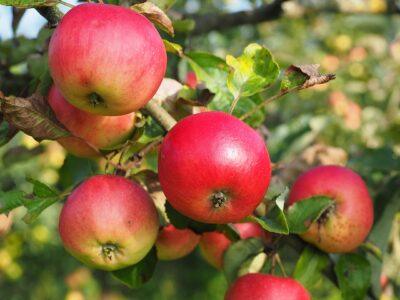My first job right out of high school — and one I was destined to work at for a number of years — was becoming the sole employee of a small farm in upstate western New York. Apple orchard country. We specialized in vegetables, fresh eggs, Christmas trees, a deer farm operation and many fruit trees. Mostly, we grew apples in three different groves, about 100 trees total.
In the summer, I sweated like a pig — plowing, mowing and trimming thousands of Christmas trees. In the winter, I bundled up in my car and headed through the fields, past a small wood lot and into the apple orchards. There, for days on end, I would trim our apple trees. Needless to say, I pruned more trees in a day than most people will ever trim in a whole lifetime.
Don’t Be Afraid of Pruning
Some people shirk back from pruning a tree and hire someone to do it. I understand the fear of forever damaging an apple tree that Grandpa planted decades ago. I think that is why it surprises many folks that pruning a fruit tree is not rocket science. While yes, there are some certain ways you have to prune different types of fruit trees, I’m going to cover the very basics of what needs to be done to take care of your trees this winter so they produce succulent fruit come harvest.
Before I go further, you need to wait until late January, early February in most parts of the country — well after the harvest. So if it is still September as you read this and you want to go prune your trees, put the tools down and wait. You absolutely do not want to trim a tree before it is time to do so. When it is time, make sure you have a good set of pruning shears and a lopper. Make sure both are sharp. A pruning saw is a great thing to have for really thick stuff.
Getting to Work
Imagine your tree as a barber would see a customer. Your goal here is to “give the tree a haircut.” You want to make the tree “look nice,” while at the same time helping branches grow thick and healthy, able to support the weight of fruit. The first thing I do is I start to clean up the tree. This is where you are going to remove any dead or dying branches. Look around the base of the trunk, and if you see any chutes coming off the base, clip them off as well. To a farmer or arborist, we call these “suckers.” You want to be sure there is at least a few feet from the bottom of a mature fruit producing tree to the first branch.
The ‘Fruit Gardener’s Bible’ Is Your Complete Resource To Growing Fruits And Nuts!
When that is done, scan the tree for chutes that are springing straight up out of main branches. These “water sprouts” need to be removed. You may need a ladder during this process to reach many of these water sprouts that are growing out of the top of the canopy of the tree.
If you notice any vines growing around the tree, cut them at the base of the ground and remove as much as you can, gently. In truth, vines are something you need to look for throughout the year in fruit trees. Cutting them at the ground kills them and they will eventually rot out of the tree.
Make sure all of your trimmings are flush. Don’t leave little nubs.
Next, trim all of the chutes that shoot straight down, as opposites to the water spouts you trimmed earlier. Remove branches that block each other’s paths, and those without the best crotch angle. (You should look for roughly a 45-degree angle with branch crotches. Gently trim until each branch has about four inches to a foot of air space around every branch.)
Now, prune the outermost growth tips of a fruit tree, so as to help the branches grow thicker and stronger. This prevents the tree from becoming ungainly and the branches from being too thin, less they bend under the weight of fruit.
After I am done pruning I gather up all the clippings and either pile them up for deer to snack on, or burn them. Of course, some people use them for crafts and so on.
Do you have any fruit tree pruning tips? Share them in the section below:
Every Year Gardeners Make This Avoidable Mistake — But You Don’t Have To. Read More Here.
